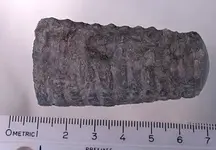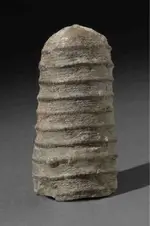vegalyrae
Jr. Member
- Joined
- Oct 26, 2012
- Messages
- 40
- Reaction score
- 22
- Golden Thread
- 0
- Location
- south shore ky
- Primary Interest:
- All Treasure Hunting
So, yea, hi everyone! first off i guess i should introduce myself.
My name is brooke and i'm from south shore ky, right smack in the middle of the Shawnee main territory.
every spring we scour the fields in the flood plains of the scioto and ohio rivers meet looking for anything we can find that the plows unearthed. well...today during a nice brisk fall walk i would something i have never seen before.
the end is rounded with 7-8 ribs carved in the middle, then ending in a perfectly cylindrical blunted end. the whole thing weighs 2.3 lbs and is nearly 5 inches in length. my first thought was a tool of some sort but it appears to be made of some sort of fossil stone. we have an axe we found earlier in the year that is about the same size but this thing is by bar the coolest thing we've found yet....even though we have no clue what it is lol! what do you guys think?
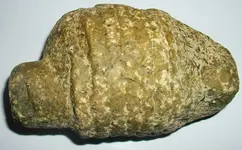
My name is brooke and i'm from south shore ky, right smack in the middle of the Shawnee main territory.
every spring we scour the fields in the flood plains of the scioto and ohio rivers meet looking for anything we can find that the plows unearthed. well...today during a nice brisk fall walk i would something i have never seen before.
the end is rounded with 7-8 ribs carved in the middle, then ending in a perfectly cylindrical blunted end. the whole thing weighs 2.3 lbs and is nearly 5 inches in length. my first thought was a tool of some sort but it appears to be made of some sort of fossil stone. we have an axe we found earlier in the year that is about the same size but this thing is by bar the coolest thing we've found yet....even though we have no clue what it is lol! what do you guys think?

Amazon Forum Fav 👍
Upvote
0




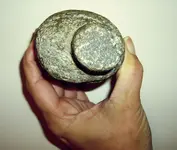
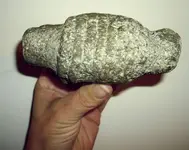

 jumping to the conclusion that it is not man made when it has evidence of being so, simply because we dont understand what it is would be counterproductive in the learning process. imagine if we gave up so quickly on everything we did not understand
jumping to the conclusion that it is not man made when it has evidence of being so, simply because we dont understand what it is would be counterproductive in the learning process. imagine if we gave up so quickly on everything we did not understand